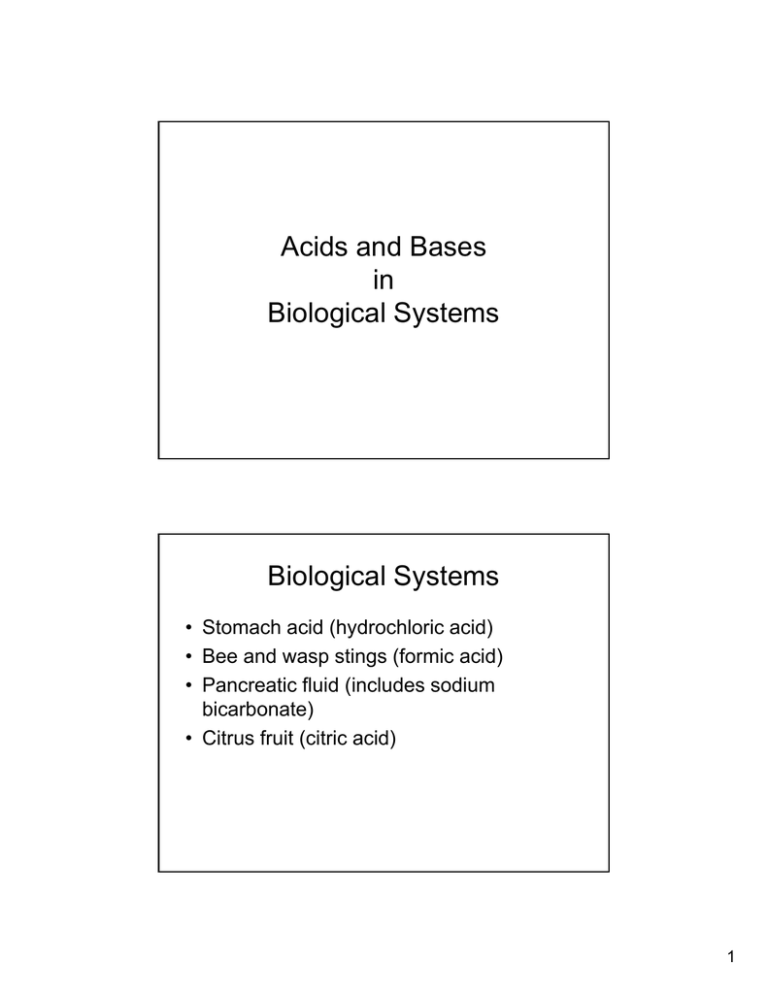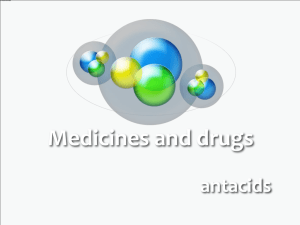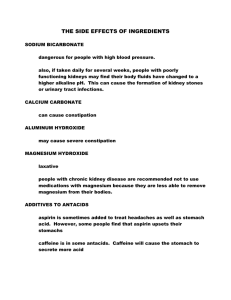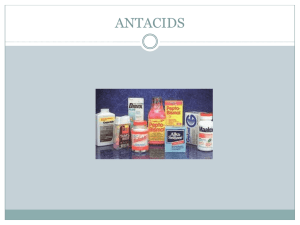Acids and Bases in Biological Systems
advertisement

Acids and Bases in Biological Systems Biological Systems • Stomach acid (hydrochloric acid) • Bee and wasp stings (formic acid) • Pancreatic fluid (includes sodium bicarbonate) • Citrus fruit (citric acid) 1 Industrial Processes • • • • Explosives (nitric acid) Fertilizers (ammonia) Glass etching (hydrofluoric acid) Speeding up industrial chemical reactions (sulfuric acid) Domestic Applications • • • • Window cleaner (ammonia) Drain cleaner (sodium hydroxide) Antacids (calcium hydroxide) Pickles (acetic acid) 2 Neutralization Neutralization Reactions • The reaction between an acid and a base i a special is i l ki kind d off d double bl di displacement l t reaction called neutralization. • An acid and base react together to form a salt and water. 3 Acid + Base → Salt + Water Example HCl(aq) + NaOH(aq) → NaCl(aq) + H2O(l) What is a salt? • We normally think of salt as the stuff we putt on food. f d • The chemistry definition of a salt is – An ionic solid consisting of a positive ion (other than hydrogen) and a negative ion (other than hydroxide). 4 Daily Applications • Why do green apples taste sour? – They contain acid • Why does orange juice taste salty if you drink it after brushing your teeth? – A neutralization reaction occurs between the toothpaste (base) and the orange juice (acid) to form a salt. • Why does acid rain cause damage to marble bl statues? t t ? – Marble is calcium carbonate. It reacts with acid to form substances that dissolve in water. • How does pouring baking soda on an acid spill p make the area safe? – Baking soda is a base and neutralizes the acid. 5 Antacids • Stomach acid is hydrochloric acid. • It has a pH of between 1 and 2. • Excess acid in the stomach can cause what is known as “heartburn” or acid indigestion. • Antacids contain a base base. • The base neutralizes the acid. Sulfuric Acid 6




